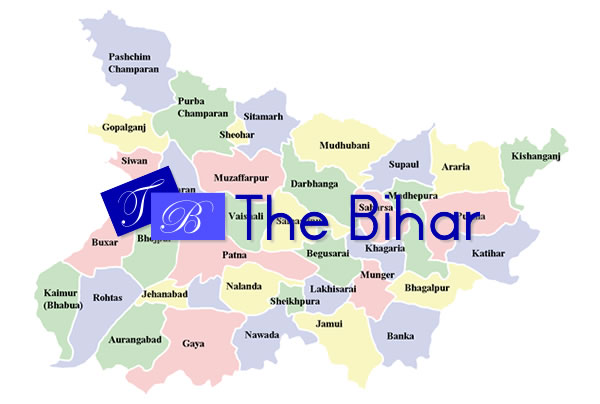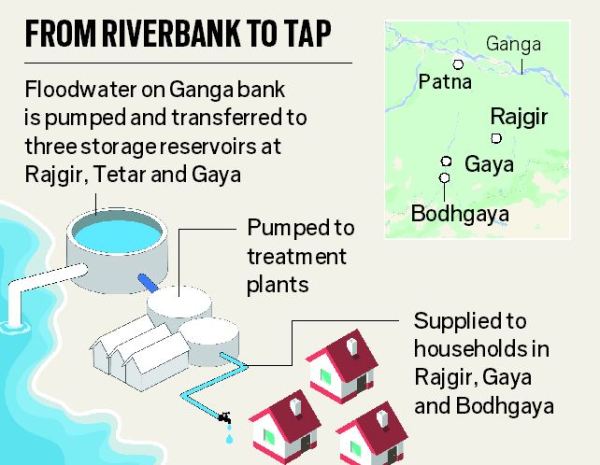Bhojpur
8 min readBhojpur is an administrative district in the state of Bihar in India. The district headquarters are located at Arrah also known as Ara.
The district occupies an area of 2,474 km² and has a population of 1,792,771 (as of 2001).
History
This district played a major role in India’s struggle for independence. Veer Kunwar Singh of Jagdishpur was the leader of the mutineers during the first war of independence in 1857, called the Sepoy Mutiny by the British. The fighting was so severe that two of the five Victoria Crosses ever awarded to civilians by the British were awarded during this battle. A third VC was awarded to an army officer. Prior to 1972 the district of Rohtas and Bhojpur were part of Shahabad District. In 2001 Buxar became a district which was earlier a part of Bhojpur District. Ara is headquarter and a big town of Bhojpur District. Veer Kunwar Singh University was established in Ara.
It is said that Ara, the present headquarters of the district derives its name from the Sanskrit word ‘ARANYA’, which means forest. It suggests that the entire area around modern Ara was heavily forested in old days. According to mythology, sage Vishwamitra, the Guru of RAMA , had his ‘Ashram’ somewhere in this region.
The 1961 Census report also describes the early period of the old Shahabad district which includes the present district of Bhojpur as :
“In the old days, Shahabad formed part of the ancient kingdom of Magadh which also contained portions of the present Patna & Gaya district. Though included in the kingdom of Emperor ASHOKA , the general absence of Buddhists’ monuments from a greater part of the district suggests that it remained almost immune from the Buddhist influence of the time”
“The famous Chinese pilgrim, Huen Tsang, who journeyed through the country in the seventh century A.D., paid a visit to Mo-Ho-Solo in Shahabad. This place has been identified with the present village Masarh, 10 k.m. west of Ara on Ara-Buxar road. The Chinese pilgrim found that the inhabitants were all Brahmins who did not respect the law of Buddha. He, therefore, felt disappointed and did not proceed to any other place in the district.”
“Not much is known about the history of the district after the fall of Guptas. In all probability it relapsed into the hands of the aboriginal tribes and came under control of petty chieftains. The most dominant people during this period were Cheros. They ruled over the greater portion of the district. Then came the Rajputs from Ujjain in the province of Malwa . Raja Bhoj was their king and the term ‘Bhojpur’ now applicable to the area is derived from him.”
The Medieval period history of this district has been described in the following words :
“While encamping at Ara in 1529 after his victory over the Afghan rulers, Babar proclaimed his sovereignty over Bihar . In commemoration of this event, the place was called Shahabad, which literally means ‘the city of Emperor ‘. This name was later applied to the Sarkar within which Ara was included and eventually toe entire district.”
Akbar, after his accession, includes the district of Shahabad in his empire, though the control was not very tight. Akbar’s General Man Singh, made efforts to organize the revenue administration of the district on a sound footing. But the local chiefs continued to resist. The Rajas of Jagdishpur and Bhojpur defied the Mughals. The Raja of Bhojpur rebelled against Jahangir. His successor Raja Pratap, was done to death by Shahjahan and the Queen was forced to many a muslim courtier. This finally quietened the Bhojpur family but stray troubles continued till the last days of Mughals.
After this the District had a very uneventful history till 1857 when Kunwar Singh revolted against the Britishers in line with the Mutineers.
THE REVOLT OF 1857
About the fight of independence of 1857, by the Raja of Jagdishpur, the famous historian Pundit Sunder Lal writes in his history named “Bart Mein Angereji Raj” as follows :
“On July 25th 1857 , the Indian army of “British Fauz” declared the Independence at Danapur and proceeded to , Jagdishpur in Bhojpur district, Kunwar Singh was the Raja of Jagdishpur at that time, Kunwar Singh was very popular in surrounding areas. At that time he was at the age of 80 years.
“When the revolutionary army reached Jagdishpur, the old King Kunwar Singh immediately took the command of that army. He reached Ara with this army and captured the English Treasury, released the prisoners from Ara Jail and destroyed English Offices totally.
“On July 29.1857, Captain Danwar proceeded to Ara with 300 English and 100 Sikh armies. When he reached near Ara, he was attacked by Gorilla fighters of Kunwar Singh in Mango Garden (kayamnagar) at night. Only 50 persons of British army were survived out of 415 till the morning of 30 July. Captain Danwar was also killed at the same place (Kayamnagar).
“A big British army led by Major Ayar with cannons proceeded to Ara from the west to help the surrounded British army on August 2, 1857. A big battle took place at Bibiganj (about 5 km, west of Ara). The English army became successful in this battle and Kunwar Singh was forced to retreat. After 8 days, the captured Ara town and the castle of Ara (Ara house) were freed. Kunwar Singh came back to Jagdishpur and Major Ayer followed him with the victorious army. After the fight of many days on Aug,14, the Kilo of Jagdishpur fell in the hands of Major Ayer.”
“After 8 months fighting with British armies at different places in Eastern U.P. . Kunwar Singh decided to come back to Jagdishpur via Gazipur. He reached his capital Jagdishpur and again took-over his thrown with the help of another small army collected by his younger brother Amar Singh on April 22, 1858 . Kunwar Singh was forced to fight again within 24 hours of his arrival at Jagdishpur. A fierce battle again took place between Kunwar Singh and Britishers at a distance of one and half miles away from Jagdishpur. This battle had taken place between the night of 22 and 23 April, 1853 and was again won by the injured Kunwar Singh”
“Kunwar Singh regained his thrown of Jagdishpur on 23rd April, 1958 and ruled again till the death. The 23rd April is celebrated at Ara, Jagdishpur and all over the state of Bihar as “Kunwar Singh Vijayotsav Diwas” every year. The old and injured Lion Kunwar Singh died on 26the April 1958 as an independent ruler but before his death he freed his state and the people from the slavery of British rule”.
“After his death, his younger brother Amar Singh took the thrown of Jagdishpur. He also fought with British army at Behia, Hetampur and Dalipur and British army were defeated everywhere. Frustrated with regular defeat General Legend resigned from his post. General Dugles took the charge of British army announced awards to the persons who could bring the head of Amar singh but was not successful in getting Amar Singh in his custody. On 17th Oct. 1958 , the British army surrounded Jagdishpur and attacked from seven points but Amar singh came out of Jagdishpur fighting with his courageous army. The Britishers captured Jagdishpur. Amar Singh surrounded by the British army at “Nounadi” 300 armies of Amar Singh was killed but he again fled with 100 army persons. The Britishers could not catch him but followed long. Once the British army was about to catch the elephant on which Amar Singh was riding but he jumped from the elephant and fled away/ He entered the forests of Kaimur hills. He never accepted the defeat. After entering Kaimur hills, there was no trace of him.”
In this way, the history of 1857, Specially of Jagdishpur and Ara of Bhojpur district is glorious and the people of the district owe their glorious past.
THE QUIT INDIA MOVEMENT
The history of “Quit India Movement” in 1942 is also written by the blood of the virtuous revolutionaries of this district. Two incidents are very important in the month of September 1942 for this district. Village Lasarhi, 32 km south of the district headquarters, Ara was the centre of the underground revolutionaries of Shahabad district. On 15th Sep. 1942 , the British police surrounded the Lasarhi village. The people of not only Lasarhi but of the near-by villages like Dhakani and Chasi bravely faced the bullets of Sten gun and LMGs. In this course 7 men and 1 woman were killed.
After passing of the Quit India Resolution on 9th Aug, 1942, the district of Shahabad had seen many protest movements. To accelerate the movement, the revolutionaries of the district decided to hoist the tri-color at Ara collectorate. Sep 28th, 1942 was decided the date by the district administration to deposit the “Role-Cess”. On this very day a group of “Satyagrahi started Satyagrah at collectorate from the village Jagwalia. The group was led by a brave soldier of independence Kavi Kailash of the village Ghoradei. Hiding from the eyes of police, the group reached somehow at Ara collectorate and hoisted the tri-color in the campus of Ara collectorate. The Satyagrahi were brutally beaten-up there. Kavi Kailash was lifted and thrashed on a big stone near Ara collectorate tank. He was also tied with horse and brutally dragged on the roads. Then boiled water was poured over him.
At last chanting the slogans of “Mahatma Gandhi ki Jai” and “Bharat Mata ki Jai”, the brave son of Bhojpur led his life to the rest and became one important martyr of this district.
Facts
Bhojpur district is one of the thirty-eight districts of Bihar state, India, and Arrah town is the administrative headquarters of this district. The land is very fertile, being on the Ganges Plain. This area is known for its rich language – Bhojpuri.
Population: Total: 1,792,771 Rural: 1,557,287 Urban: 235,484
Sub Divisions: Ara Sadar, Jagdishpur, Piro
Blocks: Ara Sadar,Udwantnagar, Jagdishpur, Koilwar, Sahar, Barhara, Sandesh, Shahpur, Charpokhari, Piro, Tarari, Bihia, Agiawon, Garhani
Agriculture: Rich Paddy Fields, Wheat, Maize, Bengal Gram, Grain
Industry: Rice, Automobiles, Clothes and Oil Mills.
Rivers: Ganges, Sone.
Hotel
Shivam rest House,Park View Hotel,regal.
Universities
- Veer Kunwar Singh University
Colleges
- Maharaja College
- Jagjivan College
- Jain College
- Sahjanand Brahamarshi College
- Sanjay Gandhi College
- Mahant mahadevanand mahila mahavidyalay, Ara
- Dr. k k mandal(jagdishpur)
- Saint barahna mahila college(jagdishpur)
Schools
- H.N.K High school
- H.P.D Jain school
- DAV PUBLIC SCHOOL
- St. PAUL HIGH SCHOOL
Mosques
- Badi Masjid, Ara
Temple
- “Maa Mahthin Mai Mandir”
- Bihiya,”Aaranya Devi Temple”, Arrah
- Surya mandir,Belaur
Historical Places
Krishan Garh, beside the river Ganga in the Ara District, is the location of a five hundred year old temple dedicated to Lord Shiva.
“Maa Kali Temple” at Bakhorapur about 15 km. far from Ara. This is one of the oldest temples in india.
“Baba Dineshwar nath Dham” at Koilwar, it’s that 16 km. far from Ara.It is dedicated to Lord Shiva. This Temple is situated at the bank of river “Sone”, Jagdishwar Madir at milki(khutaha) village about 40 km from ara. There is an old shiva temple in village Bartiar under sandesh police station,some 20 km from district hq.
Famous Politicians
Jugjeevan Ram(EX-Dy Prime minister), Meera Kumar (cabinet minister UPA govt.)
Ram subhag Singh, Was cabinet minister and First leader of opposition in Parliament of India.
Famous Personalities
Dr. Pashupati Nath Mishra was born in village Sonbarasa of this district. He is a famous Neurosurgeon and has contributed to medical literature extensively.
Vashishtha Narayan Singh is a famous Mathematician.
Justice Bhubneshwary Prasad Sinha..was born in village Gaziapur on the bank of holy river Ganga. He was the chief justice of India. His grand son justice B P Singh is a serving Judge in Supreme court.


